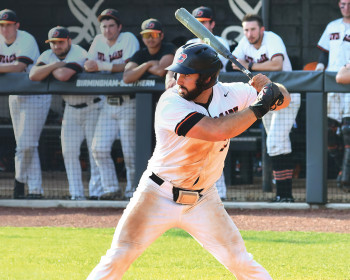Tackling Real-World Software Problems
For those who don’t often communicate through code, it can be difficult to imagine how to bridge the gap from brackets and numbers to real-world application. But in Associate Professor of Computer Science Peter Drake’s Software Development course, it’s the name of the game.
In the class, teams of four to eight students work to address the types of problems that professional software developers face on
a daily basis, which often involve multiple concepts and opposing pressures.
Customers come from within the college and from local businesses, government agencies, and nongovernmental organizations. This past year, projects included website and database development for Portland’s Bureau of Emergency Manage- ment to keep track of equipment loaned to volunteers, video game creation to help bolster earthquake preparedness, and improving a software program that tracks fruit fly larvae for Associate Professor of Biology Norma Velazquez-Ulloa.
“I would definitely consider this type of course as an essential part of my learning process in computer science,” says Terin Trachtenberg BA ’22, a computer science major from Lincoln City, Oregon.
“These experiences and skills are going to be invaluable in a programming career, and I’m grateful to have gotten the chance to give them a test run while I’m still in college.”
More L&C Magazine Stories
Lewis & Clark Magazine is located in McAfee on the Undergraduate Campus.
MSC: 19
email magazine@lclark.edu
voice 503-768-7970
fax 503-768-7969
The L&C Magazine staff welcomes letters and emails from readers about topics covered in the magazine. Correspondence must include your name and location and may be edited.
Lewis & Clark Magazine
Lewis & Clark
615 S. Palatine Hill Road MSC 19
Portland OR 97219

